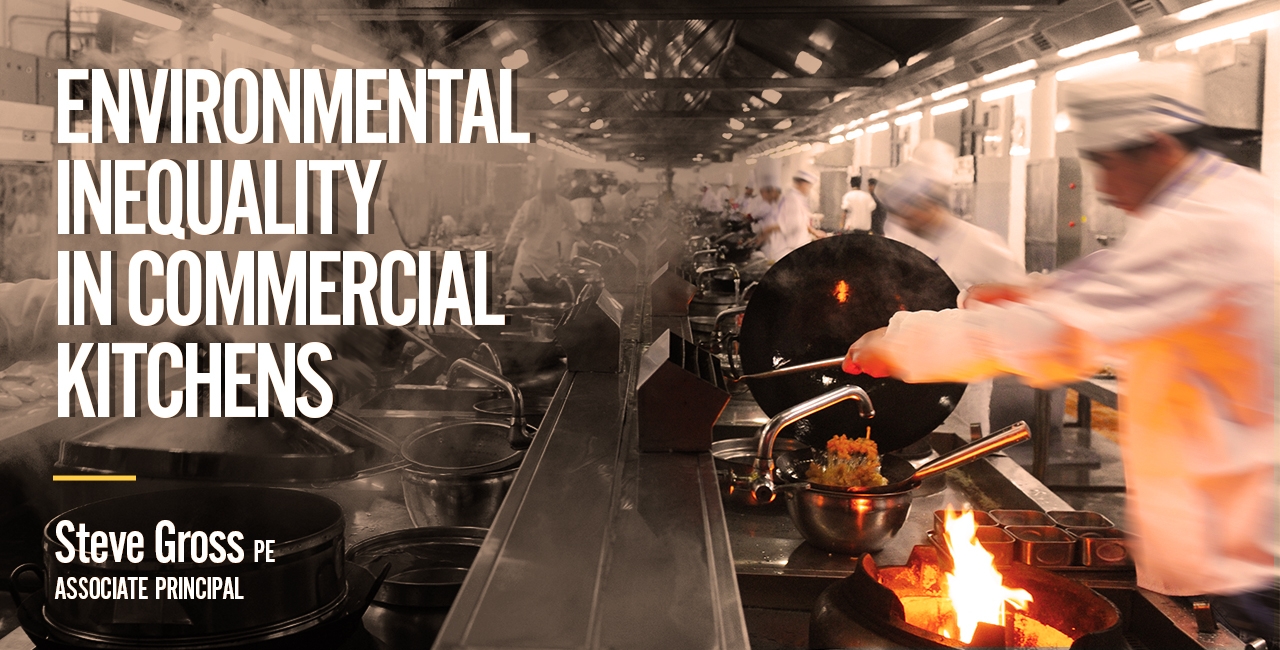
Environmental Inequality in Commercial Kitchens
May 27, 2021
Steve Gross, PE
For many, working in a restaurant is a rite of passage, whether a part-time summer job or a full-time career. In most cases, we share the common experience of the sweltering heat emanating from the kitchen. I worked as a busboy at Culpepper’s in St. Louis, MO (which have some of the best chicken wings money can buy!) throughout my high school days. On the hottest and most humid days of the summer, I clearly remember dreading the walk through that swinging door into the kitchen, where I was greeted by a stifling wall of heat. I remember being amazed by the resilience of the cooks, because they didn’t get the opportunity to escape into the dining room. They were stuck in front of the ranges and ovens for their entire shift, with temperatures regularly exceeding 90 or even 100oF.
As you most likely know, my experience is not unique. In fact, it is the norm throughout the United States and abroad. A research project published by ASHRAE in Thermal Comfort in Commercial Kitchens (RP-1469) studied more than 100 kitchens located in 9 states of the U.S. during the summer and winter seasons. The findings are startling!
Figures 6 and 8 from the publication show excessive thermal stress across all climate zones and seasons. Operative temperature and humidity data collected from the kitchens are shown on the psychrometric chart in Figure 6, with the blue highlighted box indicating the “comfort zone” as defined by ASHRAE’s Standard 55 for thermal comfort. Figure 8 shows PMV data, or predicted mean vote, which is the most widely used index for evaluating thermal comfort. This data indicates the pervasive tendency of kitchens to be “hostile working environments”.
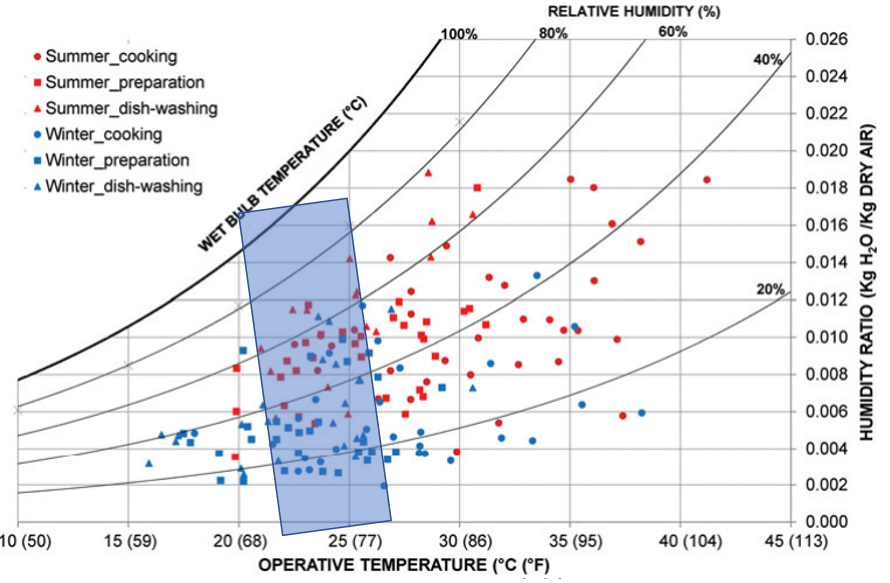
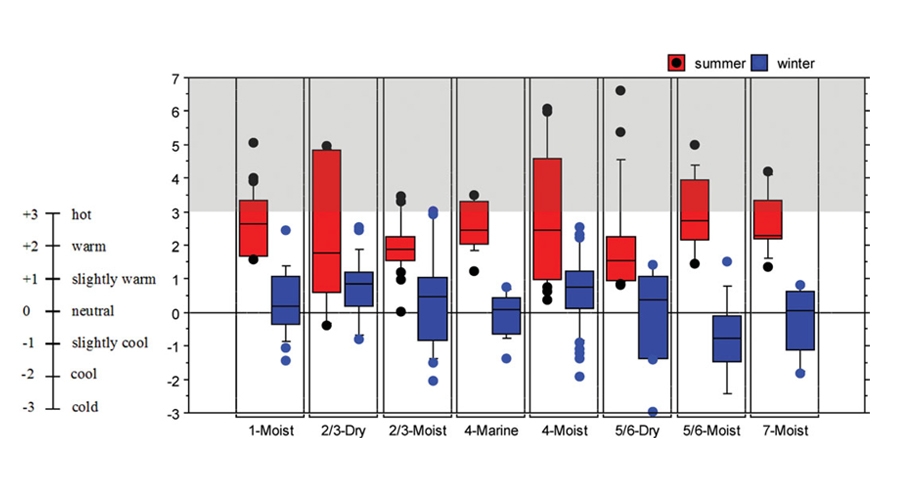
These observations highlight that the “traditional” way of designing and operating commercial kitchens isn’t working. One of the main causes for extreme thermal conditions in kitchens is the warm cooking equipment imparting radiant heat directly to the cooks and surrounding surfaces. It is standard practice for gas burning equipment to idle throughout the day, waiting to be used for a given order. The result is a tremendous amount of heat released into the surrounding environment via open flame and radiant heat from the warm surfaces of the equipment.
Many studies have revealed that thermal comfort has a large impact on the productivity and general wellbeing of the employees (Wyon 1996 and Livchak et al. 2005). It is estimated that an increase of temperature of 10oF above the neutral level may result in a 30% loss of productivity.
So, what’s the solution?
Addressing this overheating dilemma starts with equipment efficiency. As equipment efficiency increases, heat loss to the environment decreases. Traditional gas appliances waste as much as 60% of their energy through vented combustion gases and to the surrounding environment, which leads directly to space overheating and poor indoor air quality. Furthermore, as this equipment idles waiting to be used, 100% of this energy is wasted. The solution, then, is to use high efficiency cooking appliances that direct more heat to the food and less heat to the kitchen.
Eliminating or reducing combustion from the kitchen by using electric appliances is one of the most impactful changes that can be made to the traditional commercial kitchen. Electric appliances are generally much more efficient than their gas counterparts, and they don’t release harmful combustion byproducts into the working environment. Because electric equipment doesn’t require venting of combustion gases through a flue, much more of the energy is available for cooking food. A study produced by the Food Service Technology Center in San Ramon, CA compared the range of efficiencies between gas and electric cooking appliances. The results of their study are shown in the figure below, highlighting electric equipment as more efficient in each case.
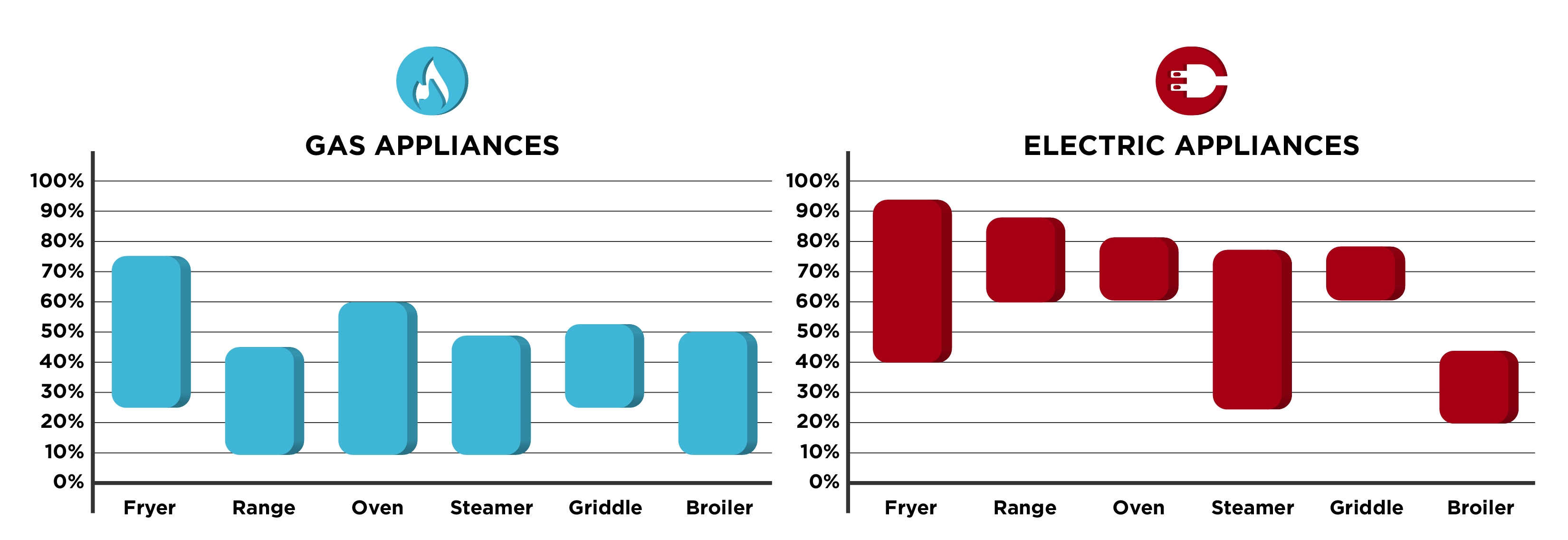
Induction cooking technology provides an excellent solution to both the efficiency and idling problems. Induction equipment uses electrical current to heat pots and pans directly through magnetic induction, instead of thermal conduction. This means 95% or more of the energy consumed by an induction range makes its way into the food being cooked. The surfaces of the cooking unit do not get hot, as there is no open flame. Furthermore, induction equipment doesn’t require preheating or idling of equipment because it is ready to cook instantaneously.
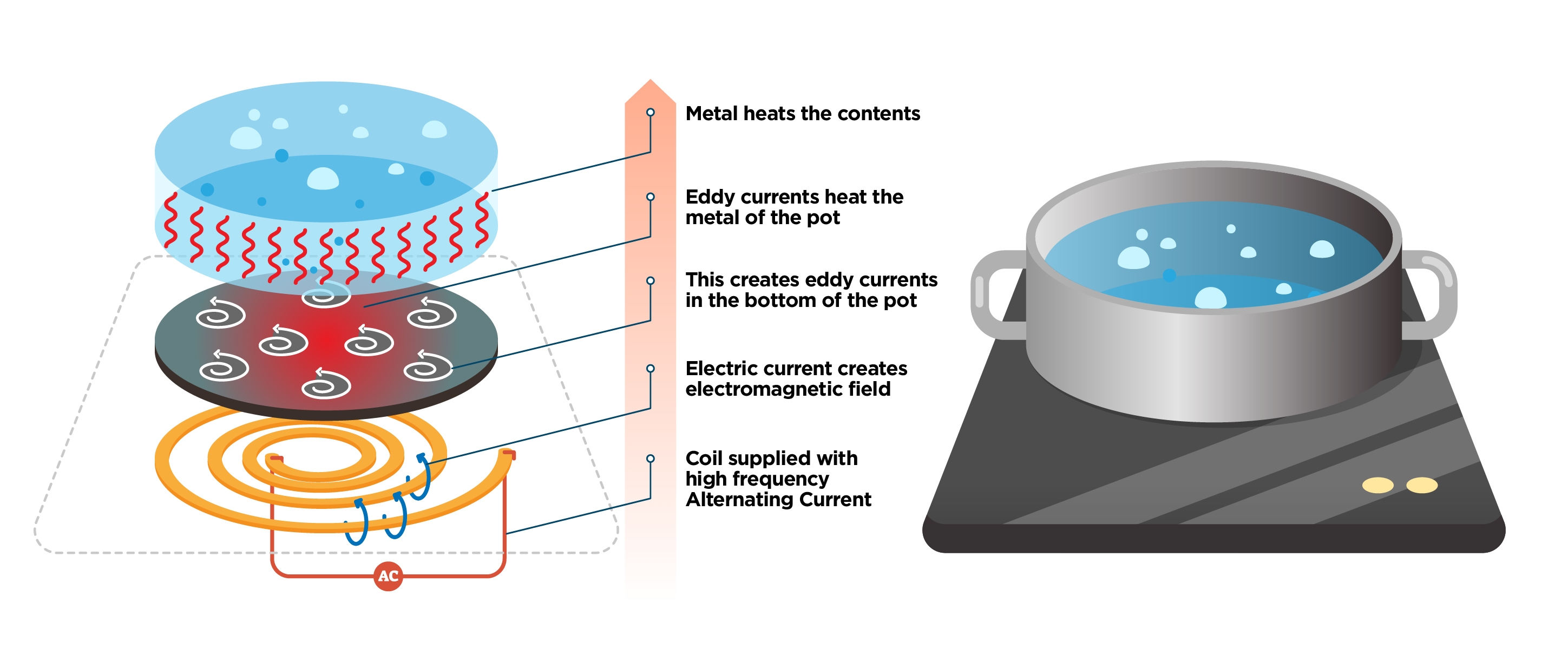
The benefits of induction/electric equipment combine to dramatically improve the thermal environment in commercial kitchens, as well as reduce kitchen energy consumption by as much as 70%! Our work at several high performance all-electric kitchens has proven this to be true. Our Chatham University Eden Hall project features an all-electric kitchen using induction ranges, griddles, and warming stations. The findings of our measurement and verification study revealed consistently mild temperatures in the campus kitchen which serves 3 meals/day to all students and staff on campus.
The graphic below shows the kitchen temperatures observed during the measurement and verification process at Chatham. During this September week in 2019, outdoor temperatures reached into the high 80’s. However, the kitchen temperature was typically between 69 and 73 degrees throughout the meal services.
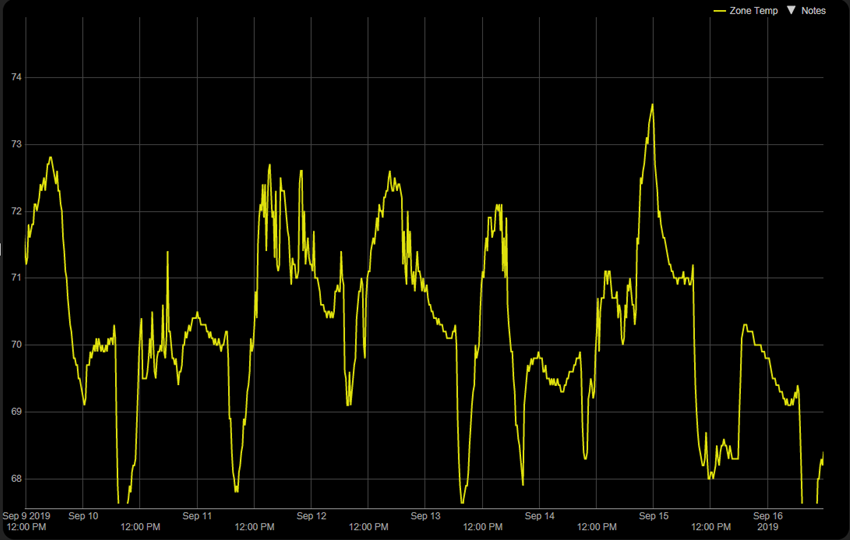
Chef Chris Galarza, Former Executive Chef at Chatham University’s Eden Hall campus and now the Founder of Forward Dining Solutions LLC., had this to say about the all-electric kitchen:
The all-electric kitchen at Chatham’s Eden Hall campus was my first experience using induction equipment. After being reluctant, I found I really enjoyed using it and couldn’t believe how comfortable the kitchen environment had become. I noticed a significant improvement in my employees’ moods and overall comfort at work. In turn we’ve seen an overall improvement of guest-facing interactions due to a more relaxed and authentic approach. We have seen less conflict and a more relaxed working environment.
While it’s not uncommon for chefs and cooks to turn their nose up at the idea of using electric equipment in their kitchens, many are discovering the benefits far outweigh the initial hurdles of “re-learning” how to cook on new equipment. In fact, several Michelin Star restaurants have already made the switch to combustion-free kitchens. Induction equipment options are becoming widely available and prices are dropping. I strongly encourage chefs, owners, designers, and engineers to consider the many benefits of electric kitchens and rescue our poor chefs from the hostile environment that is all too common in our commercial kitchens.